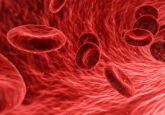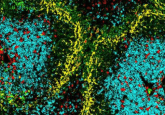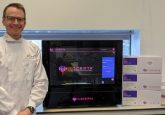The novel platform that is accelerating cancer research
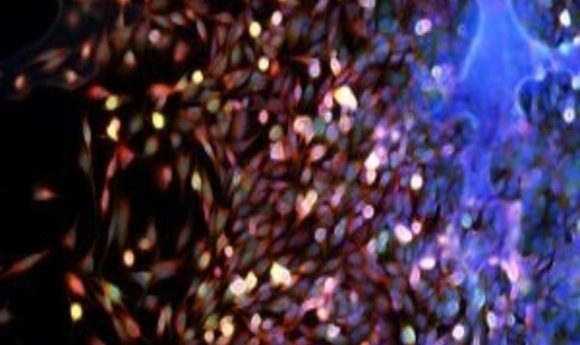
We spoke to Dennis Eastburn about how high-throughput single cell DNA sequencing is being used to assess heterogeneity in cancer cell populations.
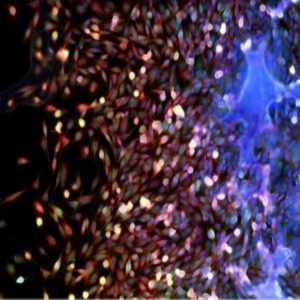
Dennis Eastburn has pioneered microfluidic technology for the analysis of cellular heterogeneity. At the University of California, San Francisco (UCSF; CA, USA), Dennis led development of the core IP that is foundational to Mission Bio’s (CA, USA) products. After Mission Bio was spun out of UCSF, he invented the Tapestri approach for high-throughput single cell DNA sequencing and applied it to applications in oncology and genome engineering.
Dennis has authored over 20 peer-reviewed publications and has secured numerous NIH grants for Mission Bio. Dennis holds a BSc in molecular biology from the University of Texas at Austin (TX, USA) and a PhD in molecular, cellular and developmental biology from the University of Colorado at Boulder (CO, USA). Prior to his work in microfluidics, he completed an NIH funded postdoctoral fellowship studying epithelial cell biology at UCSF.
Can you tell us about Mission Bio and what your aims are?
We started Mission Bio more than 4 years ago in August 2014. We offer an industry-first capability for high-throughput single cell DNA sequencing. This capability gives us an unprecedented view into the clonality and heterogeneity of tumors with a resolution that hasn’t been afforded previously. Moreover, the technology that we’ve launched promises to make this type of analysis routine so it can be ultimately deployed in the clinic and used on a day-to-day basis.
Please can you tell us about the Tapestri platform and the recent publication?
The Tapestri platform relies on proprietary droplet-based microfluidics. The idea is to take the size of a standard test tube and shrink it down to roughly the width of a human hair; therefore, affording us the ability to run millions of reactions in parallel. The Tapestri platform does that in a very rapid and cost-effective manner, providing an unprecedented high-resolution view of heterogeneity in tumor populations or in the analysis of genome editing.
The idea is to not just view the totality of variants that are present in tumors but to really understand how they are co-located within individual cells and clones, so that we can better select combinations of precision medicines that are becoming available at an increasing rate every day.
This will ultimately enable clinicians to treat not just some of the clones within a tumor but the entire tumor as early as possible in the course of the disease. This could lead to improved patient outcomes.
Your recent publication focused on acute myeloid leukemia (AML). What were the implications for that?
AML was the first application we focused on with one of our targeted sequencing panels. We now also enable solid tumor profiling for a variety of indications. AML is a great use case for the Tapestri technology because it’s known that this disease is quite heterogeneous and many patients relapse after first therapy – those relapse events are often driven by the underlying genetic heterogeneity present early in the course of the disease.
We worked with our collaborator Koichi Takahashi (MD Anderson Cancer Research Center; TX, USA) to look at an unprecedented numbers of cells within a tumor, and genotype across longitudinally collected samples from AML patients. We consistently saw that we were able to, in a routine manner, resolve clonality and other features of tumor heterogeneity that were completely missed with bulk next-generation sequencing. This is the first peer-reviewed publication of the Tapestri core technology.
Tapestri is able to routinely genotype 10,000–20,000 cells per sample run and targets up to 300 unique loci across the genome for accurate SNP/indel calling. No other platform exists that has this capability. Previously, researchers have done this type of genotyping on single cells in a very laborious fashion where they FACS sort individual cells into well plates and then perform very low multiplex variant analysis. These approaches are not scalable for clinical deployment.
We’ve worked with collaborators that say it took them a year or two to generate data for a few thousand single cells; remarkably, the Tapestri platform enables increased levels of genotyping across 20,000 cells in less than 2 days. The value of the platform is transformative for deploying this type of analysis in a routine and cost effective manner.
So it could really accelerate cancer research?
Exactly; across all cancer indications something that is becoming increasingly recognized and appreciated is that many tumor populations are genetically diverse and heterogeneous. That heterogeneity critically impacts disease progression and potentially therapy response, not just in AML, but for other types of cancer, too.
Something that’s really popular at the moment is CRISPR therapies. How could this technology be translated to CRISPR therapies?
There’s a huge promise with CRISPR but a lot of uncertainty in the potential deleterious effects of using these genome editing tools, not just for CRISPR but TALENs and other methods for genome editing too. What we’ve heard from many of our customers and partners is that they need to assess the efficiency of gene editing and the off-target effects and potentially look for genome rearrangement introduced by the gene editing tools.
In the traditional bulk sequencing you’re really just getting an average across the population and what you’re missing is whether or not you’re getting a heterozygous edit, a homozygous edit, or whether multiple edits have occurred in the same cell.
So, we launched a pilot study with one of our Pharma partners, who were trying to edit three different locations. They were getting bulk allele frequencies from their next-generation sequencing data that gave them no real sense of whether or not these three different positions were being edited to completion. By that I mean were they actually truly achieving homozygous editing at all targeted loci? With Tapestri, we were able to resolve the totality of all the different edit combinations from the populations of cells we looked at with them.
Where is Mission Bio headed next?
We will continue to offer a number of targeted sequencing panels for single cell analysis in a variety of indications; we constantly expand that list. We are also offering custom content so that investigators can actually design targeted sequencing panels for regions of the genome that are relevant to their application area.
More broadly looking at a much longer vision of the company, we started on sequencing genomic DNA because that’s really the most challenging nucleic acid to go after for a variety of reasons, but we’re also very interested in other cellular analytes such as RNA and proteins. We certainly realize there’s a big push to move into bulk genomics where you’re combining data sets from DNA and RNA, DNA proteins and RNA proteins so that is something we’re very focused on as our vision for the future of single cell analysis.
Is there anything else you’d like to add?
I’ll wrap up by saying I think this Genome Research paper was a great demonstration of the core technology that we’ve developed and its routine application for clinical sample analysis. However, this is really just the start of a number of studies that we’ve already completed with our collaborators.
Our customers are also doing research independently and there’s going to be quite a bit more in the near future – applying this technology to look at heterogeneity across tumor populations – so I would say stay tuned on that; there will definitely be some really exciting studies coming out.
